Saffron Extract and Recognizing Subtle Mood Changes
🌞 Introduction: The Quiet Art of Emotional Awareness
Most people notice mood only when it swings — when sadness becomes too heavy or irritability erupts.
But emotional balance begins long before the extremes. It lives in the subtle shifts — the gentle rise of tension after a long day, the dullness that settles after too little rest, the quiet joy that flickers when you pause to breathe.
Recognizing these micro-changes is the foundation of emotional self-awareness. And few natural compounds have been studied as deeply for their ability to enhance this inner sensitivity as saffron extract (Crocus sativus).
Once valued more than gold, saffron’s bright red stigmas have long been used to elevate mood and sharpen perception.
Today, clinical research shows that saffron’s active molecules — safranal and crocin — influence serotonin, dopamine, and GABA, offering measurable benefits for mood, resilience, and emotional clarity.
This article explores how saffron can heighten your awareness of subtle mood patterns, helping you cultivate steadier emotional energy and a more compassionate understanding of yourself.
Looking for supplements for Brain Fog? Click here.
🌿 Section 1: The Science of Subtle Mood Awareness
Your mood is not one fixed state — it’s a constantly moving field of neurochemical signals.
Small shifts in sleep, blood sugar, hormones, or stress perception can alter brain chemistry within minutes.
When you develop mood awareness, you learn to detect these shifts early — before they distort your thinking or behavior.
That awareness relies on three biological systems:
🧠 Neurotransmitters (serotonin, dopamine, GABA) — shape emotional tone.
⚖️ Cortisol and adrenal hormones — govern stress reactivity.
💓 Autonomic nervous system — mirrors inner calm or agitation through heart rate and breath.
Saffron supports all three. By smoothing neurotransmitter fluctuations and reducing stress-induced inflammation, it allows your brain to register emotional nuance more clearly — like turning static into sound.
💛 Section 2: Saffron — The Mood-Balancing Flower
Saffron is harvested from the stigmas of the Crocus sativus flower. Each bloom produces only three delicate threads, which explains its rarity.
For centuries, Persian, Greek, and Ayurvedic traditions used saffron as a mood-brightening tonic, an aphrodisiac, and a nervous-system calmative.
Modern science is now confirming those uses, linking saffron to:
Enhanced serotonin and dopamine signaling
Reduced oxidative and inflammatory stress in the brain
Improved regulation of cortisol
Stronger resilience against low mood and fatigue
✳️ Key Active Compounds
| Compound | Function | Mood Effect |
|---|---|---|
| Crocin | Antioxidant carotenoid | Enhances serotonin activity and protects neurons |
| Safranal | Volatile oil | Promotes relaxation and balanced dopamine |
| Crocetin | Carotenoid metabolite | Improves energy metabolism and focus |
| Picrocrocin | Flavor precursor | Contributes to gentle cognitive alertness |
These act synergistically — not as stimulants or sedatives, but as regulators that fine-tune perception and emotion.
🧠 Section 3: The Neurobiology of Saffron and Mood Regulation

🌿 Serotonin Rebalancing
Saffron inhibits the reuptake of serotonin, allowing more of this “contentment chemical” to remain available in synapses.
The result is smoother mood transitions — less of the emotional “whiplash” between stress and calm.
⚡ Dopamine Support
By modulating dopamine, saffron enhances motivation without triggering overstimulation. You feel engaged, not jittery.
💫 GABA and Relaxation
Safranal mildly enhances GABA signaling, helping quiet inner noise so you can perceive emotional subtleties without becoming overwhelmed.
🧩 Anti-Inflammatory and Antioxidant Protection
Inflammation blunts emotional awareness by dulling prefrontal cortex activity.
Saffron’s antioxidants restore neural sensitivity — the ability to sense both joy and stress accurately.
🌼 Section 4: Recognizing Subtle Mood Changes — What They Feel Like
With consistent saffron use and mindfulness, you may begin noticing:
🌤️ Gentle rises in optimism or warmth
🫧 Early signs of emotional fatigue (before full burnout)
🌬️ Quicker recovery after stress
💭 Clearer self-dialogue (“I feel off today — maybe I need rest”)
✨ Stronger capacity for gratitude and empathy
In other words, saffron doesn’t erase mood shifts; it illuminates them.
🕊️ Section 5: Saffron and the Rhythm of the Day
Your emotions follow circadian patterns. Morning serotonin peaks encourage motivation, while evening GABA and melatonin prepare for calm reflection.
Saffron supports this rhythm, improving emotional fluidity across the day.
| Time | Effect | Suggested Practice |
|---|---|---|
| 🌅 Morning | Boosts motivation & positivity | Take saffron supplement with breakfast |
| ☀️ Midday | Stabilizes focus during stress | Practice mindful breathing |
| 🌇 Evening | Encourages relaxation & gratitude | Reflect or journal on mood changes |
🌬️ Section 6: Breathwork + Saffron for Emotional Awareness
Breath connects the chemistry of saffron to the consciousness of awareness.
When combined, they synchronize the brain and body.
🌿 Coherent Breathing (5-5 Pattern)
Inhale 5 sec → Exhale 5 sec for 5 min.
💫 Effect: Enhances vagus-nerve activity and calm alertness.
🌼 Pair with: Morning saffron dose.
🌸 4-7-8 Breathing
Inhale 4 → Hold 7 → Exhale 8.
💫 Effect: Eases transitions between emotions.
🌼 Pair with: Evening saffron tea or capsule.
🌾 Body-Scan Breathing
Bring awareness to subtle sensations as you breathe.
🌼 Result: Integrates emotional and physical awareness.
Want to try Breathwork? Click Here.
✍️ Section 7: Journaling to Track Subtle Mood Shifts
Saffron sharpens perception; journaling translates it into understanding.
Daily Prompts
“What emotion is present in me right now — even faintly?”
“When did my mood feel lightest today? Heaviest?”
“How did my body feel before and after meals or conversations?”
“What did saffron seem to shift today — focus, patience, optimism?”
Over weeks, these micro-observations reveal patterns: emotional triggers, nourishment needs, and the environments that sustain your peace.
💬 Section 8: Therapy and the Biochemistry of Awareness
Therapeutic work thrives when emotional awareness increases.
Saffron provides the neurochemical stability that allows introspection without overwhelm.
❤️ Compassion-Focused Therapy (CFT)
Encourages warmth toward the self.
🌿 Saffron supports this by calming the amygdala, making compassion easier to embody.
🧩 Acceptance and Commitment Therapy (ACT)
Teaches you to observe thoughts without identification.
🌿 Saffron helps sustain detachment by stabilizing serotonin-dopamine balance.
🪷 Somatic or Mindfulness Therapy
Focuses on sensations and breath.
🌿 Saffron enhances sensitivity to subtle bodily cues — the physical language of emotion.
Looking for online therapy ? Click Here.
☕ Section 9: Supplementation and Usage
Typical Clinical Dosage
Standardized saffron extract (Crocus sativus L.) : 28 – 30 mg daily
Split into two doses: 15 mg morning, 15 mg evening
Often standardized to > 2% safranal and > 3% crocin
Best With
Healthy fats (olive oil, yogurt) to enhance absorption
Magnesium and B-vitamins for neurotransmitter synergy
Duration
Studies show benefits after 2–4 weeks, with deeper emotional stability after 6–8 weeks of consistent use.
🌙 Section 10: Nutrition and Lifestyle Synergy
Saffron amplifies awareness best when paired with a nourishing, balanced lifestyle.
Supportive Foods:
Omega-3-rich fish or flaxseed (neuroprotection)
Leafy greens and legumes (folate for serotonin)
Fermented foods (gut-brain balance)
Colorful fruits (polyphenol synergy)
Habits That Enhance Its Effect:
Regular sleep cycles 💤
Light morning exercise ☀️
Limiting processed sugar and alcohol 🚫
Mood awareness thrives when your body feels safe and steady.
🧠 Section 11: Clinical Evidence — Saffron vs. Modern Mood Challenges
Over 20 clinical trials now support saffron’s effect on mood regulation.
Key Findings
📊 Comparable to SSRIs: In mild-to-moderate depression, 30 mg saffron daily matched fluoxetine in symptom reduction without side effects (Akhondzadeh et al., 2005).
🌤️ Improved Anxiety Scores: Participants showed lower cortisol and calmer emotional response (Hausenblas et al., 2015).
💤 Enhanced Sleep and Morning Mood: Saffron promoted serotonin–melatonin balance (Lopresti et al., 2019).
💭 Increased Cognitive and Emotional Flexibility: Better reaction to daily stressors (Kell et al., 2017).
The consistent theme: saffron doesn’t numb emotions — it clarifies them.
🌈 Section 12: The Energetics of Saffron — A Bridge Between Heart and Mind
In traditional Persian medicine, saffron was seen as a “heart opener.”
It lifts the spirit — a quality modern research links to its serotonin and oxytocin modulation.
Emotionally, saffron symbolizes light — the ability to perceive joy amid darkness.
That light isn’t artificial positivity; it’s clarity — the kind of brightness that allows you to notice subtle hues within yourself.
“Awareness begins when the ordinary becomes luminous.”
🧘 Section 13: A Daily Awareness Routine
| Time | Ritual | Supplement | Purpose |
|---|---|---|---|
| 🌅 Morning | 5 min breathing + gratitude note | 15 mg saffron | Grounded positivity |
| ☀️ Afternoon | Short walk + mindful check-in | — | Re-center awareness |
| 🌇 Evening | Reflection journaling + herbal tea | 15 mg saffron | Integrate emotions |
| 🌙 Before Bed | 4-7-8 breathing | — | Deep relaxation |
This rhythm teaches your nervous system to associate saffron with presence — not just energy or calm, but awareness itself.
⚖️ Section 14: Safety and Precautions
Clinically safe up to 30 mg/day; higher doses may cause mild dizziness or nausea.
Avoid during pregnancy in high culinary or supplemental amounts.
Check interactions with antidepressants or anticoagulants.
Choose standardized extracts from trusted sources (e.g., Affron®, Satiereal®).
🌺 Section 15: Integrating Awareness Into Modern Life
Saffron works best when it becomes a ritual rather than a remedy.
Sip saffron tea while journaling, add a capsule to your morning meditation, or use its aroma in mindful breathing.
Soon you’ll notice not just a brighter mood — but a subtler one:
More awareness between stimulus and response
More patience during low-energy phases
More appreciation for emotional texture
You’ll start living in dialogue with your mood, not in reaction to it.
🌙 Section 16: From Mood Management to Mood Mastery
When you learn to recognize emotional micro-shifts, you move from survival to artistry — shaping your inner world intentionally.
Saffron’s golden hue becomes a metaphor for emotional alchemy:
transforming agitation into curiosity, fatigue into reflection, dullness into depth.
“Mood mastery isn’t control — it’s conversation.”
🧩 Section 17: Key Takeaways
✅ Saffron extract enhances serotonin, dopamine, and GABA balance.
✅ It helps you recognize small mood fluctuations before they escalate.
✅ Combine with breathwork, journaling, and mindful living for best results.
✅ Real emotional stability comes from awareness, not suppression.
📚 References
Akhondzadeh Basti A. et al. (2005). Comparison of Crocus sativus and fluoxetine in mild to moderate depression. J Ethnopharmacol.
Hausenblas H. A. et al. (2015). Saffron (Crocus sativus L.) in the treatment of depression and anxiety. J Integr Med.
Lopresti A. L. et al. (2019). Effects of saffron supplementation on sleep quality and mood. Nutrients.
Kell G. et al. (2017). Affron® supplementation and positive mood balance. J Affect Disord.
Panossian A., Wikman G. (2010). Adaptogens and stress resistance. Pharmaceuticals.
Gilbert P. (2014). Compassion Focused Therapy. Routledge.
Hayes S. C. et al. (2011). Acceptance and Commitment Therapy. Guilford Press.
Nagendra H. R., Telles S. (2010). Breathwork and neurophysiology. Int J Yoga.
Related Posts
-
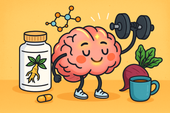
Natural Pre-Workout Supplements for Motivation and Mental Sharpness
Adaptogens are nature’s stress balancers 🌿 — powerful herbs like Ashwagandha, Rhodiola, and Holy Basil that help your body stay calm, focused, and resilient. By regulating cortisol and supporting energy balance, they boost motivation, endurance, and emotional stability — naturally. 🌞🧠
-
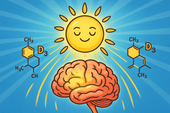
The Role of Vitamin D in Mental Drive and Ambition
Motivation is more than mindset — it’s energy in motion ⚡🧠. It comes from a balance of biology, emotion, and purpose. When your brain, body, and habits align, drive becomes effortless. Learn how to spark consistency, overcome dips, and build unstoppable momentum naturally. 🌿✨
-
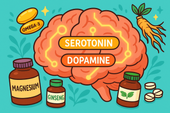
Serotonin, Dopamine, and Motivation: Can Supplements Really Help?
Ginseng is the ultimate vitality root 🌿⚡ — long praised for enhancing focus, energy, and motivation without the crash. By balancing stress hormones, boosting dopamine, and improving brain oxygenation, this adaptogenic powerhouse helps you feel clear, strong, and ready to take action. 🧠✨
-
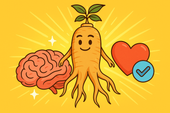
How Ginseng Helps Support Drive, Motivation, and Energy
Ginseng is nature’s endurance root 🌿⚡ — a timeless adaptogen that fuels focus, drive, and resilience from the inside out. By balancing cortisol, boosting dopamine, and supporting mitochondrial energy, ginseng helps you feel clear, strong, and steady — no crash, just sustainable vitality. 🧠✨
-
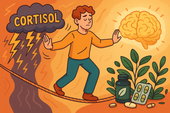
The Stress–Motivation Connection: Supplements That Balance Cortisol
Vitamin D — the “sunshine nutrient” ☀️ — plays a crucial role in mental health, motivation, and energy regulation. Low levels can lead to fatigue, low mood, and sluggish focus. Learn how sunlight, nutrition, and supplementation can restore your inner light and boost emotional balance naturally. 🌿🧠
-

When Low Mood Drains Your Drive: Natural Support Options
Vitamin D is more than the “sunshine vitamin” ☀️ — it’s a key player in mood, motivation, and overall brain health. Low levels can lead to fatigue, low drive, and seasonal sadness. Learn how sunlight, supplements, and nutrition can help restore balance and lift your emotional energy naturally. 🌿🧠
-

How Adaptogenic Herbs Help You Stay Consistent
Adaptogens are nature’s resilience enhancers 🌿. From Ashwagandha to Rhodiola and Holy Basil, these herbs help your body adapt to stress, balance cortisol, and maintain steady energy. Learn how they build inner stability — keeping your focus, mood, and motivation consistent through life’s ups and downs. ⚡🧘
-

Can Creatine Boost Mental Drive as Well as Physical Performance?
IQ, or intelligence quotient, measures more than problem-solving — it reflects how efficiently your brain processes, adapts, and connects ideas 🧠⚡. While genetics play a role, lifestyle, nutrition, and brain health all influence cognitive performance. Learn how to support mental sharpness and cognitive growth naturally. 🌿✨
-
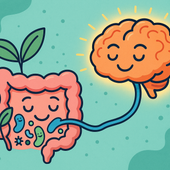
The Link Between Gut Health and Motivation: Probiotics Explained
Serotonin — the “feel-good” neurotransmitter 🌞 — plays a powerful role in mood, motivation, and overall emotional balance. Produced mostly in the gut, it connects digestion, happiness, and focus through the gut-brain axis. Learn how to naturally support serotonin for calmer energy and lasting motivation. 🌿✨
-
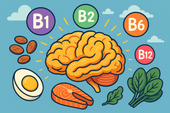
How B Vitamins Fuel Motivation and Energy at the Cellular Level
B vitamins are the body’s natural energy engines ⚡. They convert food into fuel, support dopamine for motivation, and power brain cells at the mitochondrial level. From B1 to B12, these nutrients help you stay focused, resilient, and full of drive — every single day. 🌿🧠
-
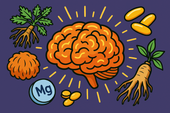
Supplements That Support Mental Endurance for Long Projects
Mindset is more than motivation — it’s the mental framework that shapes how you respond to challenges and pursue goals 🌿🧠. A growth mindset turns obstacles into opportunities, while a fixed mindset fuels self-doubt. Learn the science behind mental resilience and how to cultivate a mindset that sustains focus, creativity, and long-term success. ✨
-
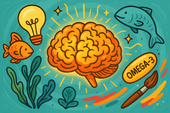
How Omega-3s Influence Drive, Creativity, and Problem-Solving
Sleep isn’t just rest — it’s the foundation of mental clarity, emotional balance, and motivation 🌙💤. During deep sleep, your brain resets stress hormones, consolidates memory, and clears away mental fog. Learn how better sleep supports neuroplasticity, creativity, and lasting energy for your day. 🌿✨
-
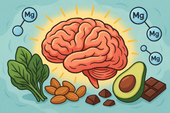
Can Magnesium Improve Your Focus and Motivation?
Caffeine is the world’s favorite stimulant ☕ — boosting alertness, sharpening focus, and lifting motivation within minutes. But there’s real science behind that morning cup. Learn how caffeine works on adenosine and dopamine, how to avoid the crash, and how to use it strategically for sustained energy and mental performance. ⚡🧠
-
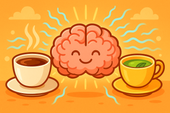
The Role of L-Theanine and Caffeine in Daily Motivation
Cortisol — often called the “stress hormone” — is both your alarm system and your reset button ⚡. It keeps you alert in the morning and helps you recover after challenges, but when it stays high too long, it drains your mood and energy. Learn how to balance cortisol naturally for steady focus, calm, and motivation. 🌿
-
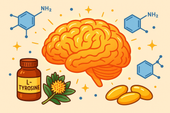
Supplements That Support Dopamine for Drive and Reward
Curcumin — the golden compound in turmeric — is more than a spice 🌿✨. It’s a powerful anti-inflammatory that protects dopamine neurons, supports brain clarity, and enhances mood. Learn how curcumin’s antioxidant properties help stabilize energy, reduce brain fog, and promote emotional resilience naturally. 🌼
-
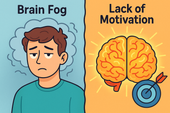
Brain Fog vs Lack of Motivation: What’s Really Holding You Back?
Hormones are the body’s invisible messengers — shaping energy, mood, focus, and motivation 🧠🌿. When they’re balanced, you feel clear, confident, and emotionally steady. Learn how key hormones like cortisol, serotonin, dopamine, and estrogen interact to influence your mental well-being and what you can do to keep them in harmony naturally. ✨
-

Supplements for Staying Collected During Disagreements
Science helps us understand why we feel, react, and change 🌿🧠. From brain chemistry to neurotransmitters and hormones, every emotional response has a biological root. Explore how research in neuroscience and psychology reveals practical ways to stay balanced, focused, and emotionally strong in daily life. 🔬✨
-

Managing Anger While Traveling
Supplements can help calm your nervous system and keep your emotions balanced while on the go 🌿. From magnesium and ashwagandha to L-theanine and omega-3s, learn how natural nutrients support stress resilience, focus, and emotional control — even through long flights, delays, and unpredictable travel days. ✈️
-

How to Keep Your Temper in Online Debates
Supplements can do more than fill nutritional gaps — they can help balance your energy, focus, and stress response naturally 🌿. From adaptogens to amino acids, the right nutrients support your brain chemistry and hormonal harmony for calm, steady productivity. Discover how supplements can build long-term resilience without the crash. ⚡🧠
-

Supplements to Stay Calm Before Public Speaking
Breathwork is one of the simplest yet most powerful tools for calming pre-performance stress 🌬️. By slowing and deepening your breathing, you lower cortisol, steady your heartbeat, and re-center your mind. Learn the science behind how controlled breathing activates your parasympathetic nervous system — helping you speak, perform, or focus with grounded confidence. 🌿
-

How to Handle Customer Service Stress Without Losing Your Cool 💬🧘♀️
Customer service can test even the calmest person’s patience. 😤 Learn how to handle difficult clients and daily pressure without losing your cool — through better mindset management, calming breathwork, and practical communication tools. Stay grounded, protect your energy, and transform stress into strength. 🌿
-
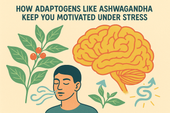
How Adaptogens Like Ashwagandha Keep You Motivated Under Stress
Feeling overwhelmed and unmotivated? 🌿 Discover how adaptogens like Ashwagandha can help you stay centered, focused, and energized under stress. Learn how supplements, breathwork, and therapy work together to restore your natural motivation and help you thrive — even during life’s toughest moments. 💪✨
-
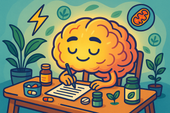
Supplements That Support Long-Term Productivity Without the Crash ⚡🌿
Cortisol — your body’s main stress hormone — can be both your best friend and worst enemy. ⚡ When balanced, it keeps you focused, energized, and ready to act. But when it stays high for too long, it leads to fatigue, anxiety, and emotional crashes. Learn how to regulate cortisol naturally through supplements, sleep, and stress management to maintain calm, steady productivity. 🌿
-
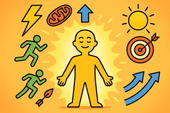
Why Energy Levels and Motivation Go Hand in Hand ⚡🧠
B-vitamins are the brain’s spark plugs 🔋. They turn food into fuel, support neurotransmitter production, and keep your mood, energy, and focus balanced. Learn how vitamins like B6, B9, and B12 work together to power the nervous system, reduce fatigue, and keep motivation high. 🌿
-
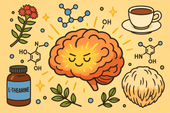
The Science of Motivation: Can Nootropics Help You Stay Focused? 🧠⚡
Nootropics are nature’s tools for sharper thinking and sustainable focus 🧠🌿. From Rhodiola and Lion’s Mane to L-theanine and Bacopa, these brain-boosting compounds enhance motivation, memory, and stress resilience. Learn the science behind how nootropics work — and how to use them safely for peak mental performance and clarity. ⚡
-
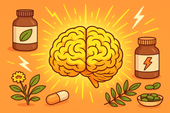
How Natural Supplements Can Boost Your Daily Drive
Cortisol is your body’s main stress hormone — powerful, necessary, but often misunderstood. ⚡ When balanced, it keeps you alert and energized; when chronically elevated, it drains mood, motivation, and focus. Learn how to regulate cortisol naturally through nutrition, supplements, and calming lifestyle habits for steady energy and emotional balance. 🌿
-
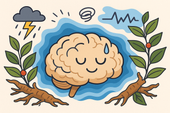
Ashwagandha for Stress and Low Mood
Breathwork is more than a relaxation tool — it’s a way to rewire your nervous system. 🌬️ Through intentional breathing, you can reduce stress hormones, improve focus, and calm emotional turbulence. This guide explores the science of breathwork and its powerful effects on mental clarity, resilience, and emotional regulation. 🌿
-
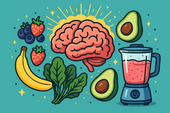
Mood-Boosting Smoothie Recipes
Your blood sugar affects far more than energy — it influences mood, focus, and emotional stability too 🍎. Learn how maintaining balanced glucose levels supports brain health, reduces anxiety, and prevents emotional crashes. Discover the foods and habits that keep your mind calm and your energy steady throughout the day. 🌿
-
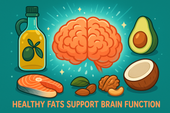
How Healthy Fats Support Brain Function
Your brain thrives on healthy fats 🧠💧. From omega-3s to MCTs, the right fats enhance focus, memory, and mood while protecting against inflammation and aging. This article explores how good fats — like those from olive oil, salmon, avocado, and nuts — build sharper thinking, emotional balance, and lasting brain vitality. 🌿
-
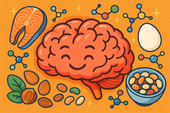
The Role of Protein in Mental Clarity
Protein isn’t just for muscles — it’s for your mind. 🧠 This guide explores how amino acids from high-quality protein fuel neurotransmitters, stabilize mood, and sharpen focus. Learn how balanced protein intake supports dopamine, serotonin, and energy regulation to boost mental clarity and emotional stability naturally. 🍳🌿
-
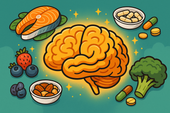
Nutrients That Support Emotional Stability
Your emotions are built from nutrients as much as from thoughts 🌿. This science-backed guide reveals the vitamins, minerals, and healthy fats that stabilize mood and reduce stress — from B-vitamins and magnesium to omega-3s and probiotics. Learn how balanced nutrition supports neurotransmitters, strengthens resilience, and promotes lasting calm and clarity 🧠✨.
-
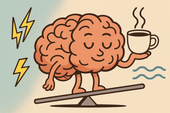
How Caffeine Affects Your Mood ☕
Your morning coffee might lift your spirits — but what’s really happening inside your brain? ☕ This in-depth guide explores how caffeine affects mood, motivation, dopamine, and stress. Learn how to enjoy caffeine mindfully without triggering anxiety, burnout, or emotional crashes. Discover the science behind your energy highs and lows — and how to find calm, sustainable focus. 🌿
-
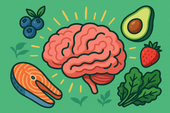
The Best Anti-Inflammatory Diet for Mental Health
Inflammation doesn’t just affect your body — it impacts your mood, focus, and emotional resilience too 🌿. This comprehensive guide reveals how an anti-inflammatory diet can support mental health by reducing neuroinflammation, balancing gut bacteria, and stabilizing blood sugar. Learn which foods to eat (and which to avoid) to protect your brain, boost serotonin, and promote lasting calm. 🧠✨
-

Why Sugar Spikes Can Worsen Depression
Sugar highs can make you feel good for a moment — but what comes next can fuel emotional crashes and deepen depression 🍭. This article explains how blood sugar spikes disrupt brain chemistry, increase inflammation, and destabilize serotonin. Learn how food, supplements, breathwork, and therapy can help you break the sugar–mood cycle and restore lasting emotional balance 🌿.
-
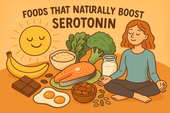
Foods That Naturally Boost Serotonin
Serotonin isn’t just a brain chemical — it’s your body’s built-in mood stabilizer 🌞. This in-depth guide explores how natural foods like salmon, eggs, bananas, and dark chocolate can elevate serotonin levels, while gut health, key nutrients, supplements, breathwork, and therapy create the perfect synergy for calm and emotional balance. Learn how to support your mind through diet, lifestyle, and mindset — naturally. 🌿
-
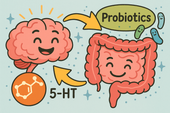
Probiotics for Mood Balance
-
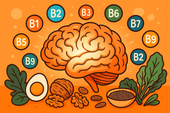
B-Vitamins and Their Role in Mental Health
Methylation is one of your body’s most important biochemical processes — influencing mood, energy, and focus. Powered by B-vitamins like B6, B9, and B12, it helps your brain create serotonin, detox efficiently, and maintain emotional balance. 🌿
-
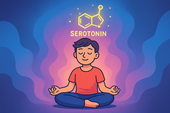
5-HTP for Serotonin Support
Calm isn’t just an emotion — it’s a physiological state where your body and mind finally sync in peace. By slowing your breath, softening your thoughts, and creating safety within, you restore the deep relaxation your nervous system craves. 🌿
-

St. John’s Wort for Mild Depression
Antidepressants can be life-changing for many — but understanding how they work and what natural options like St. John’s Wort can complement them is key. Learn how both approaches affect brain chemistry, mood balance, and long-term emotional wellness. 🌿
-
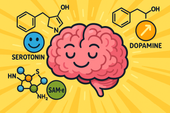
SAM-e: A Natural Mood Booster
Emotional regulation is the art of staying calm and grounded, even when life feels chaotic. By balancing your brain, body, and breath, you can respond with clarity instead of reacting from stress — building real emotional resilience and inner peace. 🌿
-

Rhodiola Rosea for Emotional Resilience
Neuroplasticity is your brain’s ability to grow, adapt, and heal — even after stress or trauma. Every thought, emotion, and habit reshapes your neural pathways, helping you build stronger emotional resilience, sharper focus, and lasting mental balance. 🌿
-
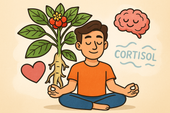
Ashwagandha for Stress and Low Mood
Adaptogens are nature’s stress balancers — powerful herbs like ashwagandha, rhodiola, and reishi that help your body adapt to tension, fatigue, and change. By regulating cortisol and supporting your nervous system, they build calm focus and emotional resilience from the inside out. 🌙
-
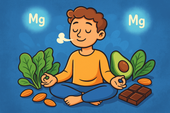
Magnesium’s Role in Emotional Regulation
Neuroscience helps us understand why we feel, think, and react the way we do. From brain chemistry and neural circuits to stress responses and emotional learning, the science of the brain reveals how our minds can heal, grow, and find balance. 🌿
-
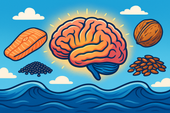
Omega-3 Fatty Acids and Emotional Well-Being
Nutrients aren’t just fuel — they’re communication signals that tell your brain and body how to function. From magnesium and vitamin D to omega-3s and B vitamins, the right mix of nutrients helps calm your mind, balance hormones, and support emotional and physical well-being. 🌙
-
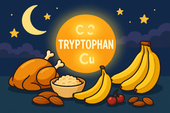
The Role of Tryptophan in Sleep Health
Mental health isn’t just the absence of illness — it’s the foundation of calm, focus, and emotional resilience. From managing stress and anxiety to nurturing self-compassion, understanding your mental well-being is the first step toward a balanced, more peaceful life. 🌿
-

Nutrients That Promote Nighttime Relaxation
Potassium does more than balance fluids — it also helps your body and mind relax at night. By calming nerves, reducing muscle tension, and supporting steady heart rhythm, potassium-rich foods like bananas, sweet potatoes, and coconut water can promote deeper, more restful sleep. 🌙
-
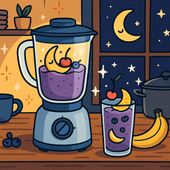
Sleep-Friendly Smoothie Recipes
Melatonin is your body’s natural sleep signal — a hormone that tells your brain when it’s time to rest. Learn how melatonin works, which foods and habits boost its production, and how to use it wisely for deeper, more restorative sleep without dependence. 💤
-

The Difference Between Sadness and Clinical Depression
Your emotions aren’t just in your mind — they’re written in your brain chemistry. Serotonin, dopamine, and GABA work together to regulate mood, motivation, and calm. When they fall out of balance, you may feel anxious, fatigued, or low. Learn how these brain chemicals influence your mental health and what you can do to restore harmony naturally. 🌿
-
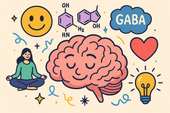
How Brain Chemistry Influences Mood
Your brain is a symphony of neurotransmitters — serotonin, dopamine, GABA, and more — working together to shape how you think and feel. When they’re balanced, you experience calm focus and emotional stability. When they’re not, mood swings and fatigue can follow. Learn how to naturally support these vital messengers for better mood and mental clarity. 🌿
-

How to Fall Asleep in Under 10 Minutes
The military knows a few secrets about falling asleep fast — and they work even in chaos. This article explores the science behind rapid relaxation, including the famous “Military Sleep Method,” which teaches your body to shut down stress and rest on command. Learn how discipline, breath, and focus can help anyone fall asleep in minutes. 🌙


















































